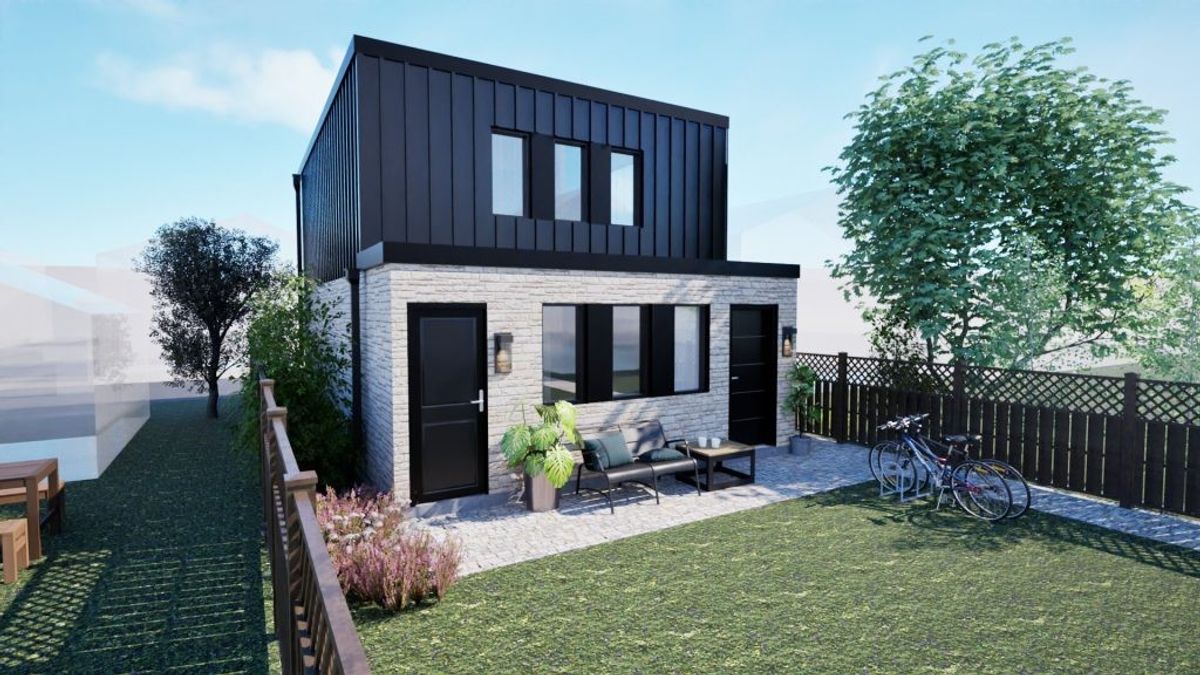Over the last few months, my partner and I were on the hunt for a three-bedroom home for our family in Toronto. We were outgrowing our two-bedroom unit but didn’t want to stray far from our current neighbourhood where we are connected to transit, close to work, and not far from our family’s favourite parks and shops.
The problem is that there aren’t that many three-bedroom units in Toronto, let alone reasonably priced and in our desired neighbourhood.
When we conducted our search, we did a comprehensive scan of the family-friendly housing options that would work for our family. We narrowed it down to five buildings that met our checklist. Just five. That doesn’t even take into consideration the few units that were actually for sale in those buildings.
From talking to friends and colleagues, I know we are not the only ones to have had this experience. Personal anecdotes may not be an official snapshot of the market, but they do help illustrate the prioritization that many developers have placed on smaller units in buildings that don’t cater to families.
More large units may be in the works though. Despite a cooling of the condo market at the height of the pandemic, people are starting to come back to the city and demand for condos is going back up. Many millennials, who make up the largest share of the Canadian population, are starting or already growing families and they need more space -- but they don’t want to trade that for long commutes from the suburbs. They’d prefer to live in urban cores where condominiums are the norm. Plus, many cities across Canada are implementing family friendly design guidelines. These often require developers to include a certain percentage of larger units in buildings. For example, the City of Toronto created their Growing Up guidelines in 2017 and the City of Vancouver has had their Family Room: Housing Mix Policy for Rezoning Projects in place since 2016.
With more demand and more three-bedroom units in the pipeline, what should we be looking for? There may not be much supply of three-bedroom units right now, but there is a lot of variety and not all three-bedroom units are made equal.
So, as an architect and a Torontonian who was recently on the hunt for a larger unit, here are three crucial factors for three-bedroom units that prospective tenants and designers should keep in mind.
Good Lighting is Important -- and Possible -- Even in Middle Units
For myself -- and I think many people -- good natural lighting is an essential component for a welcoming home. That doesn’t just apply to communal areas either. Having a window in each bedroom was a non-negotiable factor as we toured potential units. This can be hard to design in three-bedroom units, but it is far from impossible.
Having good lighting in all rooms is easier in a corner unit since the unit is open to the outside along two sides, compared to just one side for a unit in the middle of the floor. However, with the right design approach, even units in the middle of the floor can have generous lighting. This is especially true if the unit is shallow and light from one side can illuminate the unit all the way to the other side.
Sometimes natural light can come through balconies or terraces too. Having a balcony instead of a window off of a bedroom can be a nice feature for some, but it also might mean that the room will get less light if the balcony is covered.

Throughout our search, I was surprised at how many three-bedroom units included a bedroom with zero natural light. In some cases, the lack of light was more understandable because the unit was too deep or was facing an interior corner where light doesn’t reach as far. But in other cases, windowless bedrooms could have been easily avoided.
For example, some units had living spaces that hogged more than 50% of the unit’s total window space. A simple reshuffling of the floorplan could have allocated even just a quarter of the living room’s light to a bedroom. This would have minimal impact on the living room but could transform a cave-like bedroom into a livelier one, more suitable for a child’s bedroom.
There may be some demand for windowless rooms, especially if the room is intended as an infrequently used office or guest suite, but for families who need those spaces as regular bedrooms, zero light is a big sacrifice.
Find a Balance Between “Wasted” Corridor Space and Bedroom Privacy

The smaller a space is, the more important efficiency and thoughtful design are. Every little trade-off and decision can have an impact, which is why finding a good balance between “wasted” corridor space and the location and privacy of bedrooms is so key.
Some three-bedroom layouts locate the bedrooms immediately off of the communal living and dining areas. This helps use square footage efficiently since there is no need for extra corridor space that serves little functional purpose. On the flip side, having bedrooms right off of communal areas sacrifices privacy and could pose noise concerns if there is activity happening in the main area while someone is trying to sleep or relax. Finding this balance will depend on user needs and preferences but is always something to be aware of when designing or touring a three-bedroom unit.
Thinking Beyond the Unit and Into the Building and Neighbourhood

As indicated by the previous two sections, carefully planned unit layouts can make or break a space for a family. However, the unit itself is not the only space that matters in the day-to-day lives of families. Amenities in the building and in the neighbourhood can help make up for any space a family is missing or lacking in their unit. For instance, some buildings are incorporating communal playrooms, daycares, craft rooms for messy projects, and other family-friendly amenities. Even locating large units close to one another is valuable because it promotes a sense of community and encourages socializing.
It’s not just up to developers to provide family-friendly spaces though. Cities have to ensure that the right infrastructure exists in these neighbourhoods so that families don’t have to go far to access the services that add value to their lives. This means building schools, community centres, and child-friendly parks in the areas where they are needed.
Let’s Demand and Design Apartments That Welcome Families
Designing good three-bedroom units is not as easy as designing bachelor, one-bedroom, or two-bedroom units. There are a lot more elements to incorporate and in the case of growing families, more people of different ages with unique needs to consider. But good three-bedroom designs are possible, especially if adequate lighting, balances between efficiency and privacy, and a holistic view of livable spaces are considered.
These are the types of units that our cities deserve and providing them sends a positive message that families are welcome in our urban core.






















